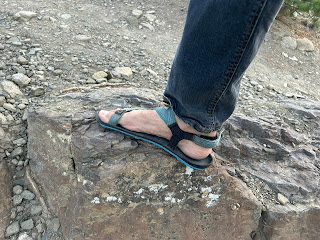When I started karate in 1979, it was mainly for self-defense, but I did become interested in the Asian aesthetic and some martial wisdom—as much as a teenager could.
Then, as an awkward high schooler, my need for self-defense grew and overshadowed any aesthetic musings. My experience with trauma and feeling alienated was in full bloom. When my karate school closed, I got darker and more aggressive, which lasted for a few years. At that time, I met Rocky Graziano, Jake La Motta, and a few other famous boxers. After that experience, I felt kind of turned off by fighting. Even as a 17-year-old in pre-politically correct days, hearing the N-word shouted out when a Black former Heavyweight champion entered the room didn't sit right—adding to that their faces had been remodeled from being hit there so many times.
After fighting in the Golden Gloves Tournament at Madison Square Garden and my experiences with some boxing champs, fighting was not a great life choice. I also met a girl who was into dancing and art, and my friends turned me onto Pink Floyd’s music; their albums, The Wall, Wish You Were Here, and Dark Side of the Moon, notably Eclipse, showed me a vision of understanding psychological pain and alienation and being in tune with the Universe seemed like the right path. Then, I started taking drugs to explore a shamanistic union with nature. I went to art school to pursue this further. I spent the next 10 years pursuing a vision of art that was trying to become in tune with nature. I attended a College in a mountain town in New York State. This was my first experience in the mountains. So, journeying to the mountains and taking psychedelics became a passion. I became frustrated with the school’s demands and wanted to be a free spirit. I lost my pragmatic side.
After a series of profound life changes, I left everything in NY and decided to hitchhike to California as a free spirit, taking a copy of the Tao Teh Ching with me. I eventually landed in Taos, NM, and some truly magical things sparked a spiritual transformation. Unfortunately, I was on the receiving end of some nasty experiences and witnessed the backstabbing all too common in the art world. To be clear, I was also not in a mentally healthy space either. So I left Taos and headed to Seattle just when grunge took off, and I felt at home there. After more backstabbing experiences in the art world, I began questioning what art even offers me. I also became friends with the girlfriend of Alice In Chains’s Lead singer, Demri. I saw her 3 days before she was to die from a drug overdose. She looked like an old woman. When I heard she died, I knew this path wasn’t for me. The pursuit of fame is a black hole filled with backstabbing and an ever-present gravitational pull toward an early death.
It seemed like the universe was looking out for me, and this theme kept coming up in my life; I knew I needed a change, and martial arts saved me once as a young man. So, I knew it was something I needed again. I attended an Aikido school in Seattle. I learned a great deal, but the teachers demanded a large amount of money for testing. When I said I didn’t know if I had it, the teacher yelled at me. I knew right there I was done with that school. Moreover, I was experiencing some pain from injuries as a young man, so I spoke with my Naturopathic Doctor, and he suggested I take Tai Chi. I had already been doing a lot of acupuncture for the pain, so it seemed like a natural progression.
I loved Tai Chi and began practicing every day. I started reading every book on Qi Gong I could find, knowing this was my path. My chronic wrist pain and early exposure to Asian healing methods seem to come to fruition in my study of Tai Chi and Qi Gong.
This started me getting involved in health; my wrist injury was the main instigator of this pursuit, leading me to understand more about the human body and Chinese Medicine. I became fascinated with the body and Qi Gong and opened the door to a path that unified nature, health, and the body. A friend in my Tai Chi class told me about a Qi Gong master named Dr. Wong. I immediately attended his class that Saturday. Dr. Wong began discussing Traditional Chinese Medicine theory and how Qi Gong was an integral path.
Soon after, I attended the famous Energetic Retreat in Washington State, where I first met Fook Yueng. Fook Yueng is a renowned Qi Gong master who demonstrated some serious skills even in his 80s. At that retreat, I also met Gao Fu, a famous Chen Tai Chi Master who was also in her 80s. Both these masters were so healthy and fit that I knew I needed to commit to this path. I also thought to myself that I felt like my old art school days of tripping in the mountain, but I was able to do it without drugs, and more importantly, it was positive and healing with no adverse side effects.
Through a long, committed practice, I have learned to trust my body. The wisdom and the Qi are there; it always gives you what you need if you listen.


